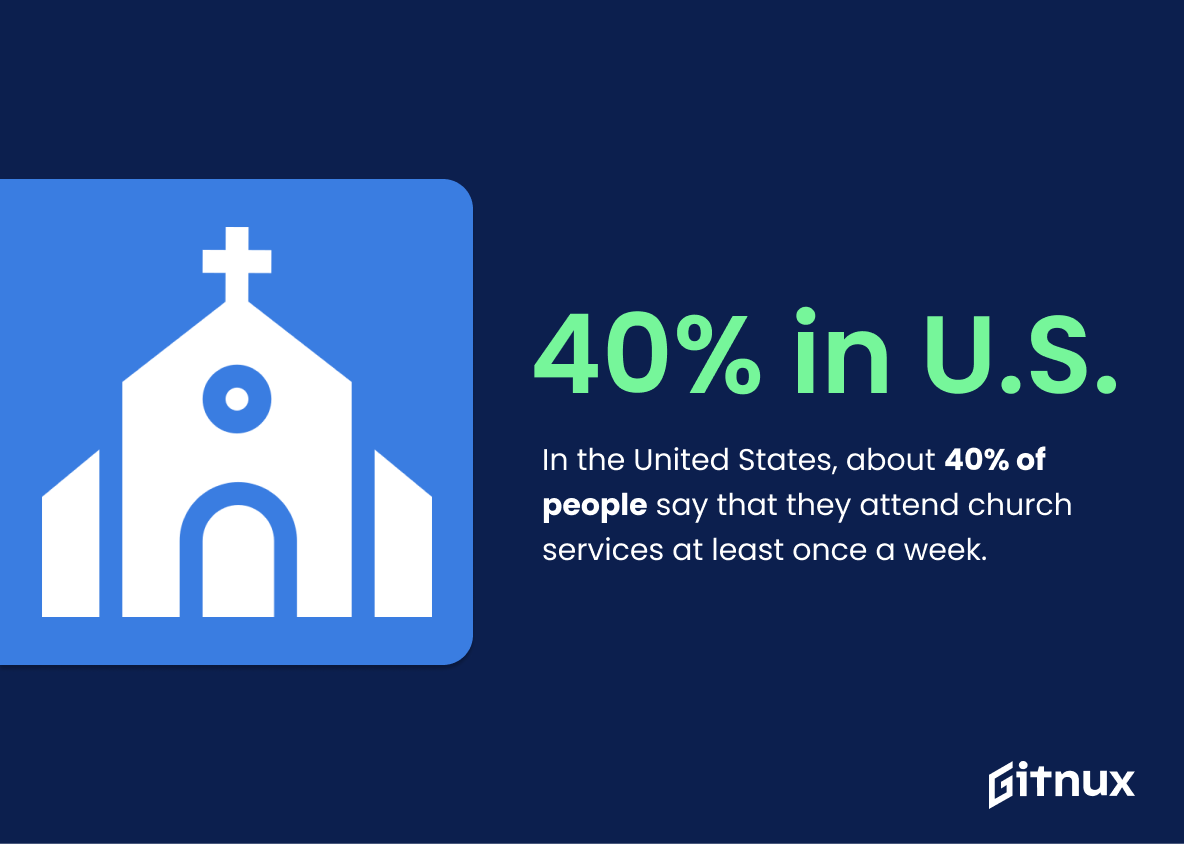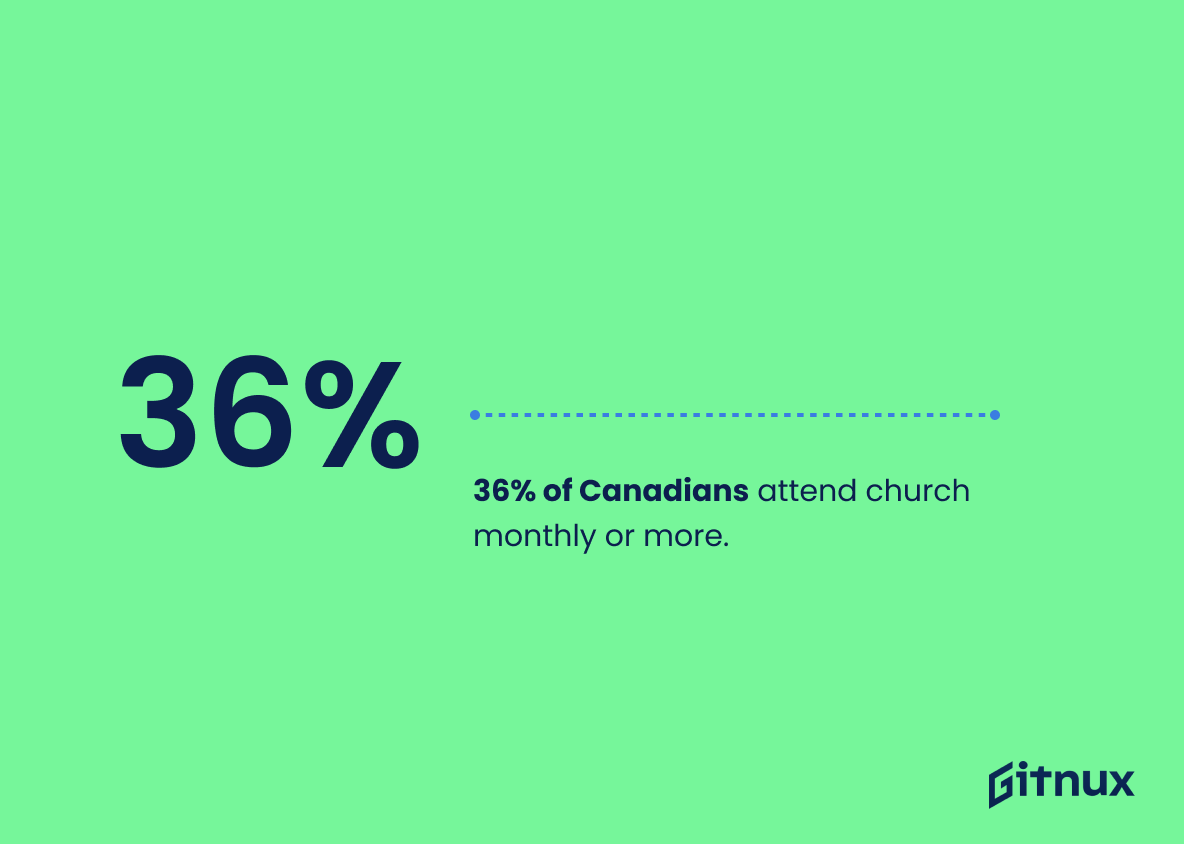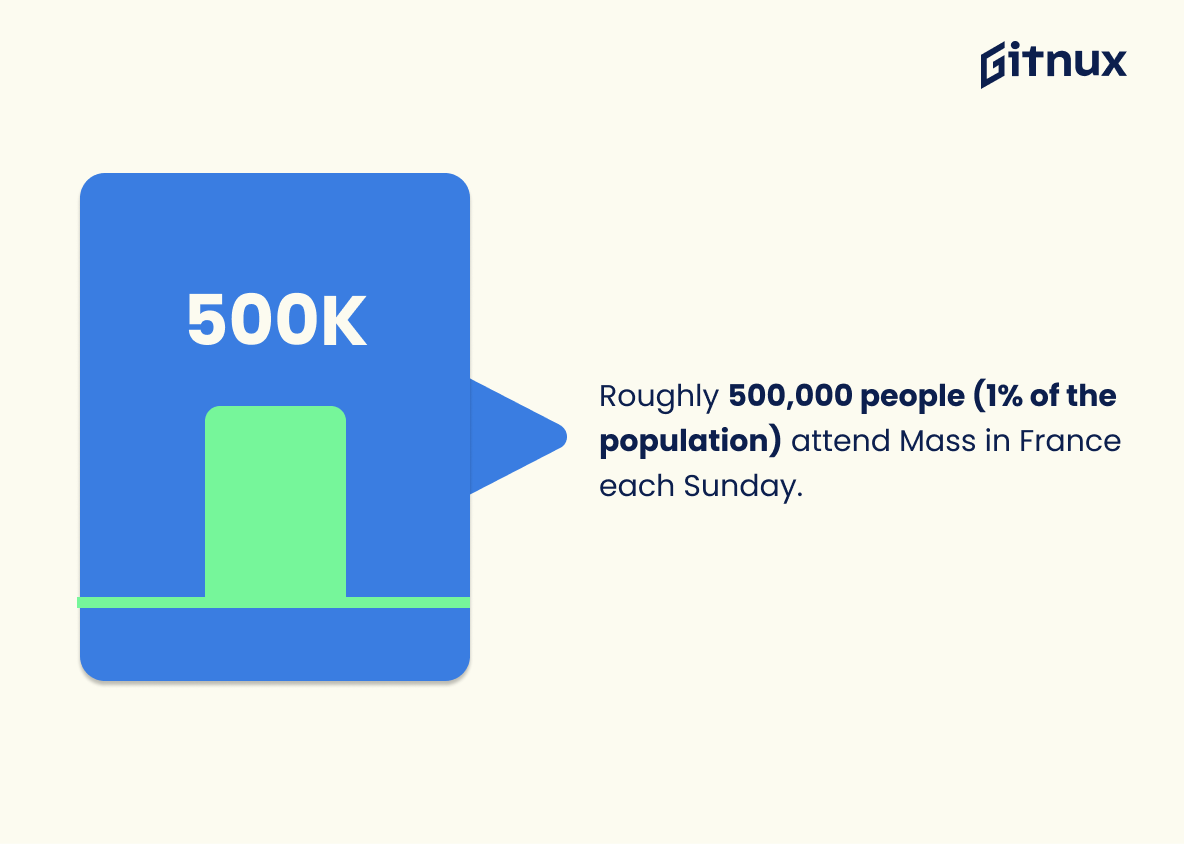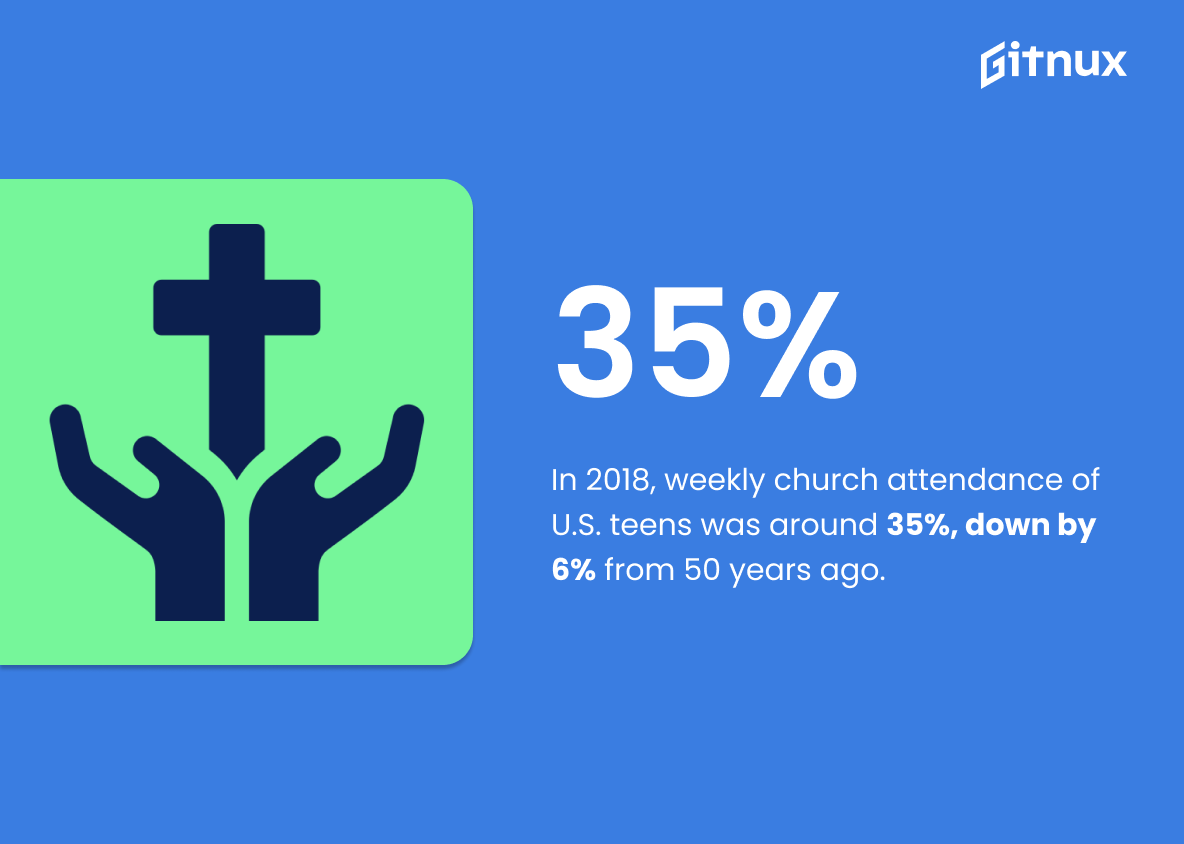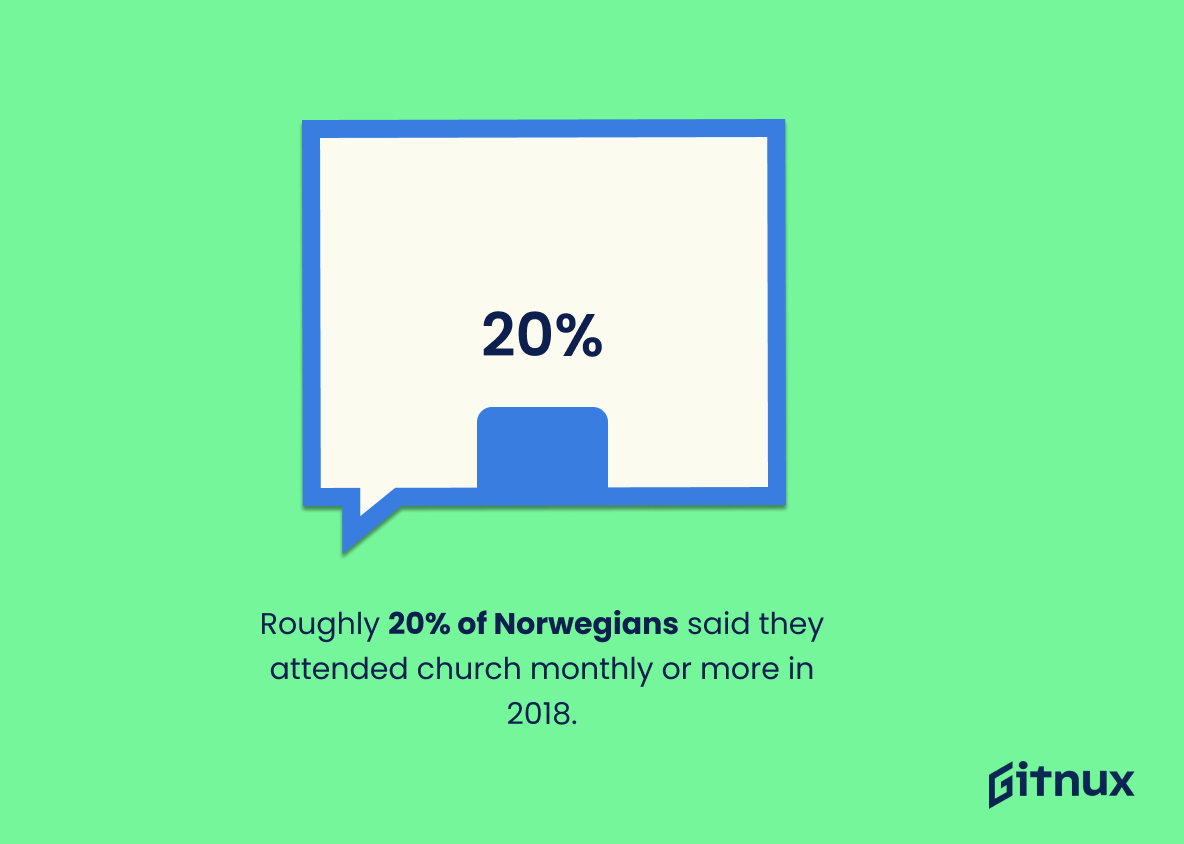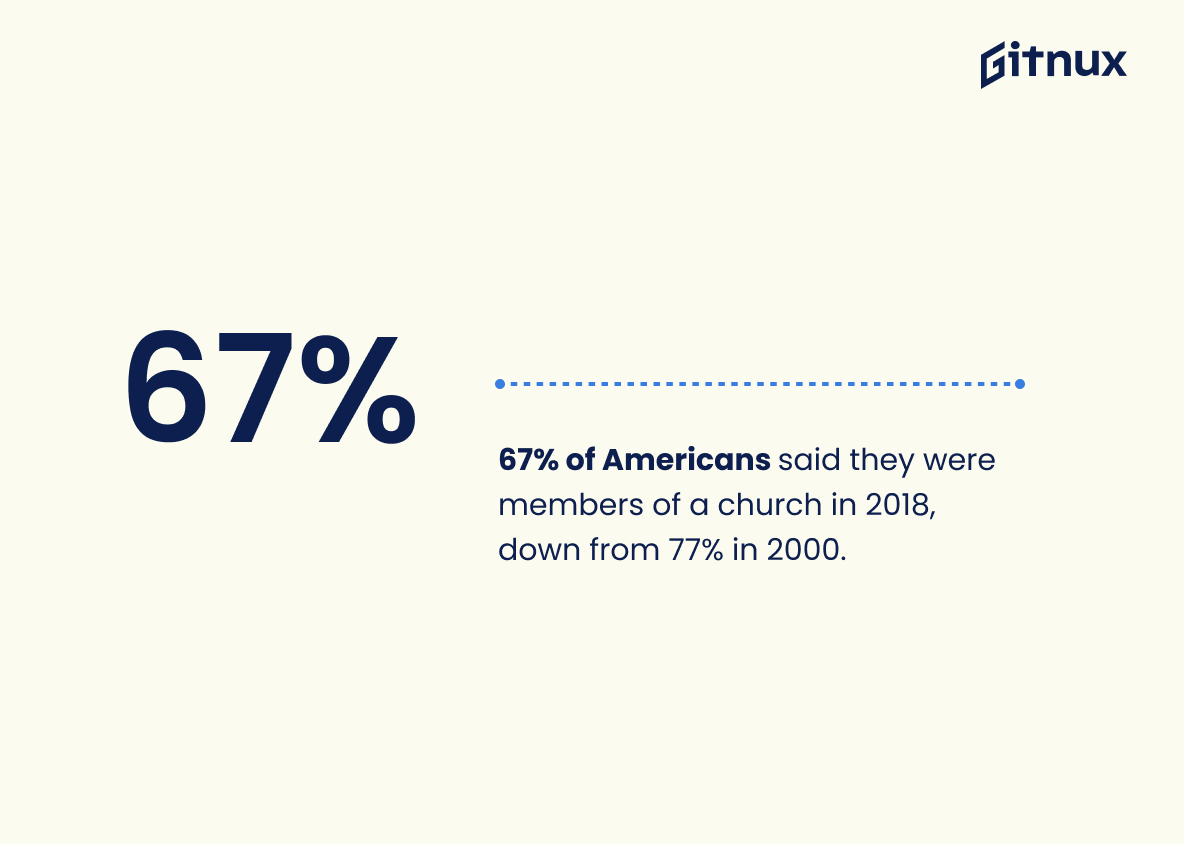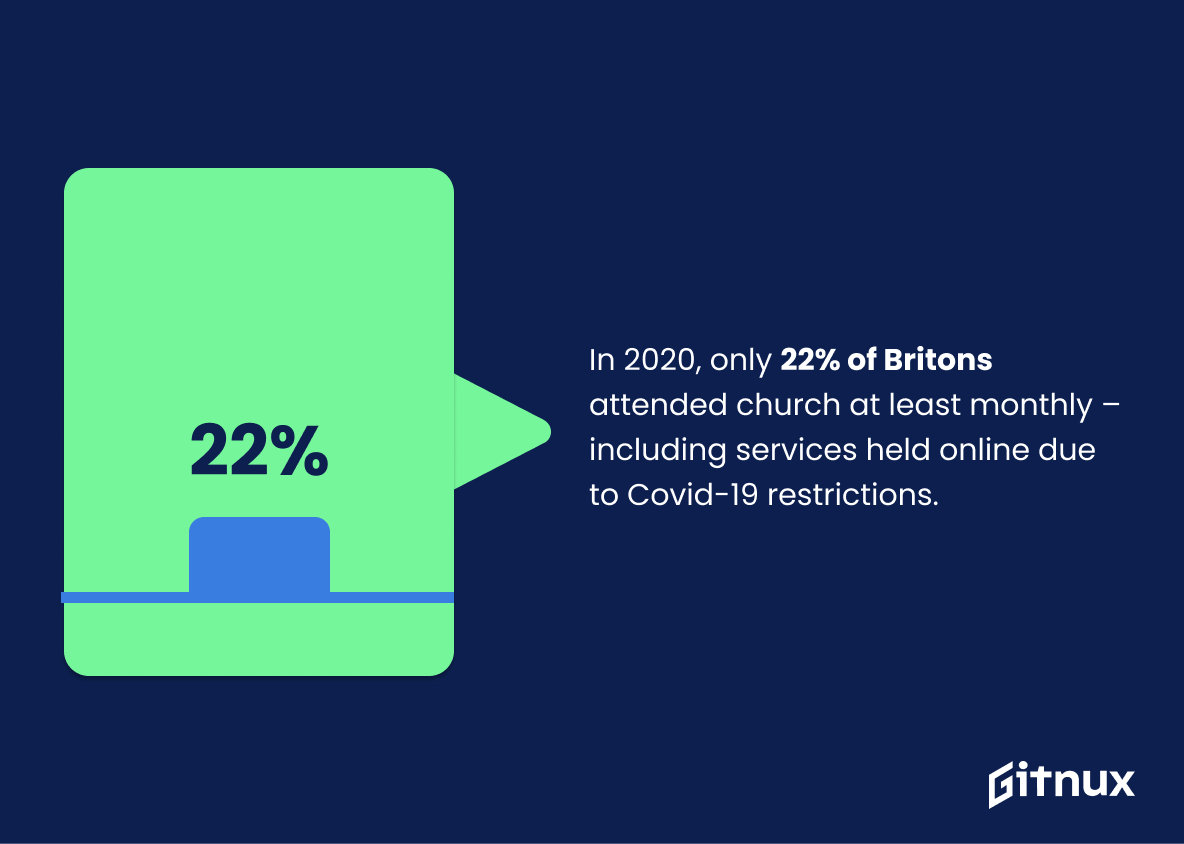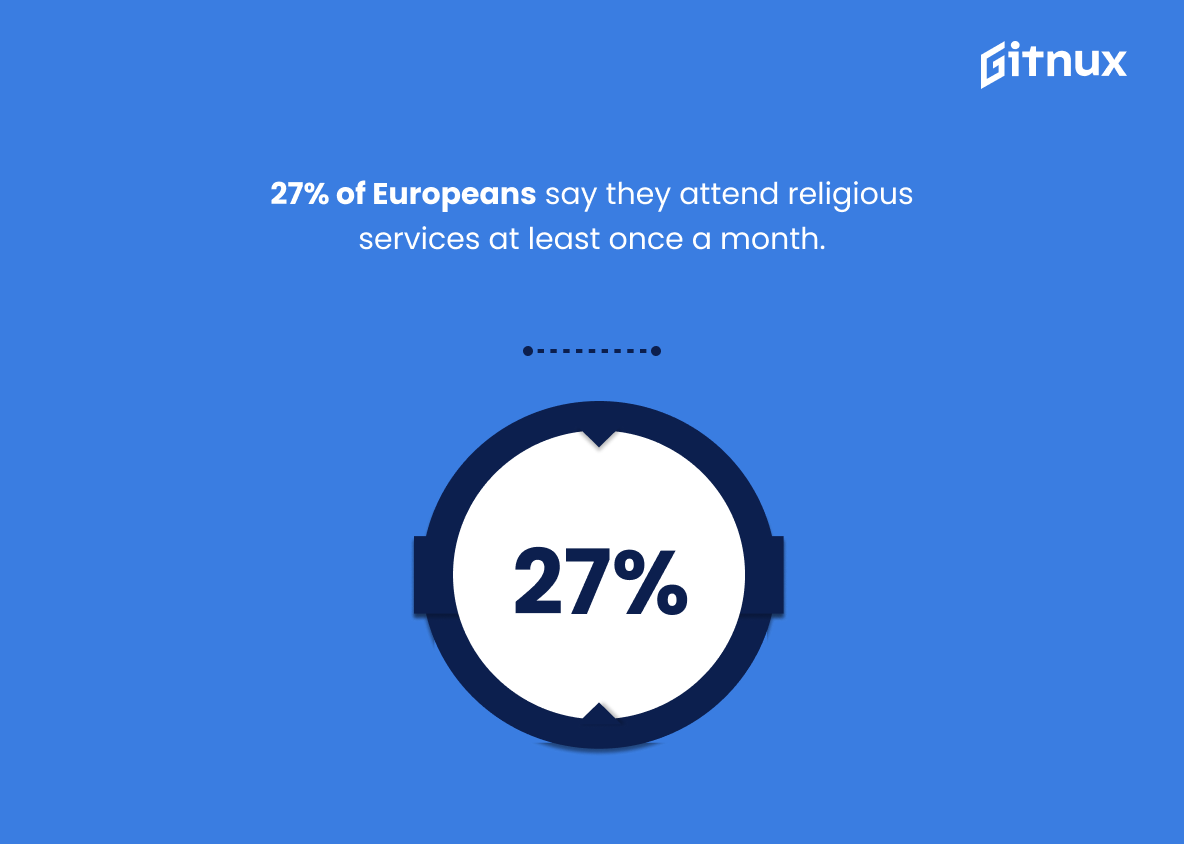In an increasingly digital world, where spirituality often takes on new forms, the traditional practice of attending church service continues to hold a certain allure for many. This blog post delves into the fascinating world of church attendance statistics, revealing the dynamics between faith, community, and weekly rituals.
We’ll examine changes in trends over time and dissect the factors that influence these stats. Whether you’re a religious leader seeking insights or an impassioned believer curious about the broader picture, join us as we explore what the numbers have to say about the role of the church in today’s world.
The Latest Church Attendance Statistics Unveiled
In the United States, about 40% of people say that they attend church services at least once a week.
Grasping the significance of the statistic that asserts approximately 40% of individuals in the United States state they attend church services at least weekly, can lay a textured foundation for a blog post exploring Church Attendance Statistics. This number, rather illuminating, serves as a pillar in portraying the religious landscape of the United States, suggesting a notable portion of the population continues to prioritize regular church services.
This statistic paints a thought-provoking picture regarding the longevity of religious traditions, possibly acting as a catalyst for deeper investigation into the factors influencing these attendance rates. Furthermore, it brings to light numerous fertile avenues for discussion, such as demographic differences, changing trends, geographical variations, and the influence of cultural or societal events on church attendance. Diving into this statistic, ultimately, can make the pulse of American religiosity more palpable for readers.
Around 31% of Russians attend church services more than once a month.
Threaded within a blog post on Church Attendance Statistics, the detail that around 31% of Russians attend church services more than once a month gives intriguing insight. It paints an intriguing religious and cultural portrait of Russia, showcasing an engaging level of religious activity. This percentage, when mirrored against other global or regional figures, opens a window into comparative religious rites and societal norms.
It serves as a quantitative bookmark that allows readers to gauge the pulse of religion’s role in Russian society. More so if this blog post takes a temporal look at church attendance, this data could hint at shifts in religious sentiments over time, undulating with the ebbs and flows of societal events and attitudes.
36% of Canadians attend church monthly or more.
Unraveling the patterns of church attendance within the Canadian populace, one might be intrigued to discover that over one third, precisely 36%, of all Canadians make their way to church on a monthly basis, if not more. This intriguing manifestation of religious frequency turns a captivating new leaf in our discourse on Church attendance statistics, rendering it an essential talking point.
This metric, thus, paints an elaborate picture of how intertwined the fabric of faith is within the daily rhythm of life for a significant segment of Canadian society. It provides a quantified indicator of religious engagement across the country, setting a data-based stage for further explorations, interpretations and perspectives on both spiritual practices and cultural dynamics within Canada.
Roughly 500,000 people (1% of the population) attend Mass in France each Sunday.
This intriguing data point helps us unwrap the layers of cultural and religious dynamics in France. Peering through the lens of this statistic, we begin to see the tapestry of faith and commitment, expressed by the 1% of the population who fervently attend Mass every Sunday. Such figures provide not just stark numbers, but offer a more comprehensive tableau, depicting spiritual habits, traditions, and shifting trends.
This statistic introduces a fascinating counterbalance, highlighting the presence and the dedicated following of the Church in a country renowned for its secularism. Thus, it nourishes our understanding of the landscape of religious beliefs and practices in France, deepening our insights for a riveting blog post about Church Attendance Statistics.
43% of Americans who are religiously unaffiliated say they seldom or never attend religious services.
Diving into the realm of church attendance statistics, this piece of data strikes a compelling chord. Highlighting that 43% of religiously unaffiliated Americans confess to seldom or never attending religious services, it paints a distinct picture of the religious landscape in the United States. This statistic not only speaks volumes about the evolving patterns in religious engagement, but it also acts as a mirror, reflecting the behavioral trends and beliefs of nearly half the religiously unaffiliated population.
The consequence of this non-attendance is profound, potentially affecting aspects such as community development, social networks, and the overall influence of religious institutions. In the blog’s context, it lays a cornerstone for understanding changing faith dynamics and exploring why people may feel spiritually disconnected from traditional religious setup thus influencing the direction of our discussions.
In 2018, weekly church attendance of U.S. teens was around 35%, down by 6% from 50 years ago.
Examining 2018’s weekly church attendance records uncovers a compelling story about the religious habits of U.S. teenagers. Remarkably, only 35% claimed to attend services on a weekly basis, revealing a substantial decrease of 6% from the data recorded half a century ago.
This striking narrative thread effectively illustrates the evolving landscape of religious behaviors over time, providing essential context for a deeper exploration of Church Attendance Statistics. It invites the reader to delve beyond the surface figures and investigate the reasons behind this shift – whether it be cultural, societal, generational or something else entirely.
Roughly 20% of Norwegians said they attended church monthly or more in 2018.
Unveiling the church attendance habits in Norway throws illuminating insights into the DNA of its culture. The fact that nearly one fifth of Norwegians reported traversing the sanctuary’s hallowed paths each month or even more in 2018, whispers a subtle tale of enduring faith in the midst of modern life’s relentless whirl.
This dash of statistical spice not only adds dimensions to the understanding of the religious practices in Scandinavian context, but also enhances the global palette on church attendance patterns. By shedding light on this piece of information, we open an intriguing window into a country’s societal behavior and religious propensity, granting readers a more nuanced view of spiritual narratives across geographies.
67% of Americans said they were members of a church in 2018, down from 77% in 2000.
Within the fascinating context of the blog post concerning church attendance statistics, this shift from 77% church membership in 2000 to 67% in 2018 emerges as a significant piece of the puzzle. It offers insights into the evolving American religious landscape, suggesting a potential waning in traditional religious affiliations or institutional ties.
This downtrend reflects a crucial societal shift and poses tantalizing questions about changing spiritual engagements and practices. The figures serve as a pulse-check, helping readers glimpse the unseen tides of change within the realms of faith and religiosity. The shift in these percentages presents an opportunity to further explore the underlying reasons, thereby adding depth and detail to our understanding of American religious life.
In 2020, only 22% of Britons attended church at least monthly – including services held online due to Covid-19 restrictions.
Unveiling the fascinating tale planted within this statistic, we are invited to venture into the spiritual lifelines of the British society in 2020, marked and affected by the global pandemic. With a striking figure of merely 22% of Britons attending church services at least on a monthly basis – a fact heightened in its intrigue when including online services necessitated by Covid-19 restrictions – the digital divide and the transformation in religious practices are exposed to scrutiny.
The figure serves as a beacon, highlighting the potential shift in religious rituals and beliefs. It opens the door for an exploration into whether this reflects a trend of decreased affiliation and attendance, or simply the complications induced by the Covid-19 pandemic. Moreover, it throws a question to the wind – How has the church adapted to maintain a connection with its congregation in such unprecedented times?
Ultimately, the statistic paints a picture of more than just the frequency of ‘attendance’, it presents a story of faith, adaptation, and human resilience during the hard-hitting waves of a pandemic. A story worth dissecting and understanding in the realm of Church Attendance Statistics.
27% of Europeans say they attend religious services at least once a month.
The mosaic of church attendance in Europe takes an enchanting hue with the intriguing data point of 27% Europeans asserting their monthly rendezvous with religious services. This percentage serves as an anchor, an edifice that gives an understanding of the depth of religious commitment across the diverse cultures dotting the European landscape.
The contours of analyzing church attendance statistics gain a substantial dimension with this statistic, rendering depth to debates circling secularism, socio-religious fervor, cultural shifts or simply the evolving patterns in practicing faith. The transformative power of this statistic, hence, enriches the discourse and paints a more comprehensive picture of church attendance patterns in Europe.
Around 65% of Polish people attend church at least once a week.
Delving into the rich tapestry of global church attendance, the spotlight shines on the vibrant religious devotion in Poland. Astonishingly, the heartbeat of faith is evidenced by approximately 65% of Polish people attending church at least weekly. This intriguing trend in Poland, significantly higher than in many other countries, offers potent intrigue.
It helps to map the spiritual landscape and religious culture of the nation, setting a baseline that nullifies assumptions and stereotypes, thereby informing broader discussions on religiosity. Further, it presents an opportunity for deeper evaluation of societal, cultural, or even political factors that might be intertwined with this powerful expression of faith, thereby enriching the overall understanding of worldwide church attendance patterns.
Conclusion
Understanding church attendance statistics can provide profound insights into the relevance and role of church in our society. Persistent shifts, both increases and reductions in these statistics, reflect evolving societal conditions, trends, and beliefs. While declining figures may seem disheartening to some, others view this as an exciting challenge to adapt and modernize their approach to spirituality and community-building, leveraging technology and innovative methods.
Conversely, an increase illustrates the sustained need for spiritual unity. Regardless of how they are interpreted, studying church attendance statistics continues to be a crucial tool in comprehending our multifaceted society.
References
0. – https://www.www150.statcan.gc.ca
1. – https://www.www.pewresearch.org
2. – https://www.www.bbc.com
3. – https://www.www.ssb.no
4. – https://www.www.pewforum.org
5. – https://www.faithsurvey.co.uk
6. – https://www.www.childtrends.org
7. – https://www.news.gallup.com
